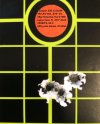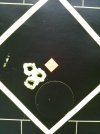Mikecr
Well-Known Member
It isn't really a burning/erosion, that leads to a normal [loss of accuracy point] from a barrel.But just were does the barrel burn?
The normal cause is carbon impingement to a point of constriction.
There is some point, some distance down a bore, where carbon works it's way into the metal. It's just the right temperature and carbon state to condense into the metal surface, right at that region. What's the word,, precipitate?
Bullets have to squeeze through it, and then they're relatively loose for the rest of their travel.
This distance & timing varies with all that's going on from your load and shot timing, but nobody has ever escaped it. All barrels reach an endpoint of peak accuracy, and it's usually a step change. Those actually reaching and following cutting edge accuracy can see the change right to the particular shooting session. Those that never reached peak accuracy from a barrel, will not even notice it's demise.
If you don't manage carbon well a temporary constriction can build, which you can outright feel with a tight patch. This can be removed with a short stroking of J-B non-embedding bore cleaner. If the constriction is a moly ring precipitation, you can forget it right there. The fix is too damaging. Game over.
It might seem like regular but mild fire lapping could mitigate eventual constriction, but I have tried this with variance across 3 barrels of the same chamber, and it did not change accurate barrel life at all.. It's like if you open the constriction, well now you've created a rough patch (friction point), that again messes with the load results.
None of my barrels have exhibited bad throat erosion at end of accuracy. That's not it.


